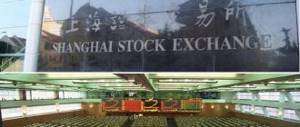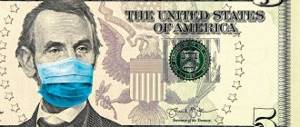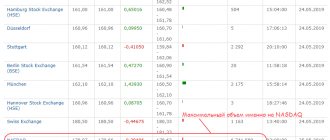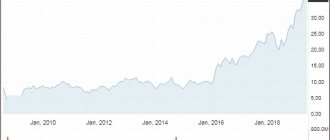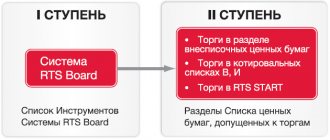Exchange trading of sugar has faced controversy. The Moscow Exchange turned to the Federal Antimonopoly Service (FAS) with a request to clarify how it can trade sugar at market prices while the producers of this product have pledged to sell it at a fixed tariff of 36 rubles per 1 kg. The FAS noted that it supports exchange trading, but emphasized: at the end of 2021, producers entered into agreements to stabilize prices and must provide sugar to retail. The purpose of trading on the stock exchange is to determine the market price of a product. But now this mechanism is losing relevance, because the cost has been fixed, experts are perplexed.
Unsweetened life: they want to introduce excise taxes on products with excess sugar and salt
The proposed tax could include sauces, canned food, dumplings and soda.
Online sugar chart
India is considered the birthplace of sugar. Today, sugar is produced in many countries; it is one of the most valuable food products. The main source of sugar is sugar cane; in Russia and a number of other countries, sugar is produced from sugar beets.
Refined sugar is white, unrefined sugar is brown. Unrefined is less common on sale and costs more.
Sugar is also produced from maple, palm and sorghum.
Types of sugar:
- sand;
- lump;
- candy;
- powder;
- syrup.
Sugar consumption in the world is growing rapidly. Average annual sugar consumption per person in European countries:
- 2 kg in the mid-19th century;
- 17 kg in 1920;
- 37 kg at the beginning of the 21st century.
The most famous exchange contracts (traded on ICE):
- Sugar no. 11 Futures;
- Sugar no. 16 Futures;
- White Sugar (No. 407) Futures.
SUGARUSD chart courtesy of TradingView
Sugar futures – Sugar No. 11 Futures
Stock ticker
: SB
Exchange
: ICE (US)
Trading hours
: 8:30 - 19:00 (London Time)
Contract volume
: 112,000 pounds (about 50.8 tons)
Delivery months
: January, March, May, July, October
Exchange quote
: price in cents per pound
Minimum price increment
: $0.0001 (1/100 cent) per pound ($11.20 per contract)
Last day of trading
: last business day of the month, previous.
delivery Position restrictions
: no more than 5,000 contracts per delivery month
Contract type
: delivery
Sugar is a primary food product. It belongs to carbohydrates, which are valuable nutrients and are instantly absorbed by the body. Sucrose is produced in two ways - from cane (70% of world production) and beets (30%). The largest producers of cane sugar are Brazil, India, China, Thailand. In America, the states of Florida, Louisiana and Hawaii are engaged in the cultivation of sugar cane. Sugar beets are produced in Europe, China, Japan and the USA (Minnesota, Idaho, Michigan).
Currently, sugar competes in the market with other sweeteners, such as syrup made from a special variety of corn with high fructose content. Almost 80% of global demand for the product comes from developing countries. About 70% of the world's sugar is consumed in the same country where it was produced.
Fundamental Factors
Sugar futures historical maximum (64 cents per pound) in 1974, and their historical minimum (2 cents per pound) a little earlier - in the late 1960s.
Brazil's use of sugar cane and beets to produce ethanol in 2006 greatly boosted global prices. Brazil is a leading producer of both table sugar and fuel ethanol, using the same natural resource. When trading sugar futures, pay close attention to the weather in Brazil, India and the United States. Heavy rains during the harvest period can cause losses of part of the crop, which will push prices higher. The cost of sugar tends to rise from September to December. Increasing global ethanol production is contributing to long-term price increases.
Alternatives
Futures for other types of sugar are traded on the ICE exchange - Sugar No. 14 for exclusively American products (ticker SE) and Sugar No. 16, which in the future should completely replace No. 14 (ticker SF). The volume of both futures is also 112,000 pounds.
Links
Specification of the sugar contract on the exchange Sugar futures quotes
Schedule
Don't forget to subscribe to updates via E-Mail or RSS, look at the TOP 100 and share with colleagues:
Unit of measurement of cow's sugar
Measures of goods on the exchange:
- weight: pound, ton, troy ounce,
- volume: bale, bushel, barrel.
On the ICE exchange, sugar No. 11 and No. 16 are traded in pounds (about 0.45 kg), white sugar (No. 407) - in tons.
Sugar Contracts no. 11 and Sugar No. 16 involve the supply of 112 thousand pounds of goods, the white sugar contract is 50 tons.
Contracts for raw sugar are traded on MOEX (Moscow Exchange). The unit of measurement is kilogram, the contract volume is 1016 kg (1 long ton).
NTB is launching a spot sugar market from the end of August
MOSCOW, July 23 – PRIME. The National Commodity Exchange (NTB, part of the Moscow Exchange group) plans to launch trading in new instruments at the end of August, the underlying asset of which is white sugar and raw beet sugar, NTB Director Sergei Naumov said during an online conference.
“The new contract on NTB is spot trading, not derivative financial instruments (already on the exchange - ed.). Direct participation in trading without brokers is assumed, unlike the previous model. That is, transactions are concluded directly between the seller and the buyer, the goods being two types of goods - white sugar and raw beet sugar. We plan to start trading at the end of August,” Naumov said.
The sellers are only factories or holding companies of these manufacturers; the buyers are any companies except permanent entrepreneurs. Delivery options - self-pickup by road or stocking in a warehouse. The seller delivers the goods on the basis within five working days. The supply bases are factories that started production in the current season and have recommendations from Soyuzrossakhar, Naumov clarified.
The trading mode involves a two-way counter anonymous auction from 11 a.m. to 2 p.m. and settlements at 10 a.m. and 3 p.m., lot volume is 20 tons, the price includes VAT, the price step is 10 rubles per ton. Confirmation of the conclusion of the agreement is an extract from the exchange register. The exchange clearing commission will be 0.15% of the transaction volume, the fee for technical access is 5 thousand rubles at a time and 300 rubles monthly.
The director of the NRB recalled that currently trading on the exchange is represented by forward contracts with the participation of a central counterparty and a commodity supply operator (the volume was about 20 thousand tons in the first half of 2021 and from 58 to 65 thousand tons in 2018-2019). He explained that due to the fact that last year the custodial risk in the form of grain loss materialized, the clearing center reduced the limits on the volume of transactions - both in the grain and sugar markets.
“Therefore, in order to be able to sell a large volume of sugar... and in order to bring it to the exchange for a larger number of participants, we are switching to another trading scheme - this is spot trading in sugar through a central counterparty and a commodity supply operator,” Naumov noted.
The prerequisite for the creation of a spot sugar market is, first of all, a government decree, which provides for the possibility of an agreement among participants on the export of sugar if it is necessary to sell up to 10% of the sugar produced on the commodity exchange. The volume of production of white beet sugar in the 2019-2020 season amounted to 7.5 million tons, thus, from August to December of this year, it is expected to sell a volume of about 200 thousand tons, according to the NRB materials.
Sugar price on the stock exchange
The price of sugar and other commodities depends on a number of factors:
- production;
- demand;
- speculation;
- exchange rates;
- force majeure (droughts, floods, hurricanes, wars, political factors, etc.);
- world crises.
On ICE, sugar is traded in US dollars, on the Russian exchange - in rubles. Other platforms offer trading in the national currency of their country - Swiss francs, rands, pesos, Hong Kong dollars, euro rupees, yuan, yen, Australian dollars, etc. Some platforms are multi-currency, that is, you can trade in different currencies.
The graph below shows the dynamics of the price of white sugar in dollars per ton in the period 2010-2019.
As you can see, periodically the price increases significantly, after which it decreases. In 2011, a ton of white sugar reached prices above $800, while in the fall of 2021 it was between $320-330.
WHAT THE EXPERTS SAY
“For starters, it would be nice to understand what happened to sugar in the first place.” This is a paradoxical story, for about five years we had a colossal overproduction,” Anatoly Tikhonov, director of the center for agribusiness and food security at the Higher School of Corporate Management of the Russian Academy of National Economy (RANEPA), told “For three or four years it was sold at cost or even lower, but the government did not pay attention to this. Sugar farmers were looking for a way to compensate for losses, and they found it - they sharply expanded exports and reduced the area under sugar beets.
For obvious reasons, it “exploded” during the pandemic, when some factories stopped working, but sales abroad were still going on.
“Sugar, which was in abundance in 2021, spread like sand,” the expert states. — Now the sown area has been reduced compared to what it was. And the sowing campaign is not off to a good start. Therefore, there are indeed prerequisites for the fact that in the second half of the year, starting in the summer, prices may go up again. What can be done? An intervention fund is a good idea. Zeroing the import duty on sugar is less good because it is a blow to our sugar industry. What are we going to do next? Develop imports? Let's take a better look at why the costs of our producers of sugar and other products have increased in recent years and not increase them further at the same pace. An increase in VAT, new requirements for packaging and from the Platon system, an increase in the cost of fuel and electricity - together they are gaining quite significantly. In addition, we have been talking for a long time about the need to provide targeted support to low-income, socially vulnerable citizens. People with a stable income don’t really notice whether a kilogram of sugar costs 40 rubles or 60. This is important for the poor. Subsidizing such citizens, for example, through special food cards, would be a more effective measure than trying to regulate prices.
Investing in sugar
Traders and investors make money in financial markets through:
- futures,
- options,
- indices,
- ETF,
- CFD,
- shares of producers on stock exchanges.
Trading is becoming more and more popular, becoming more accessible. You can invest in sugar and other financial market commodities through trustees, without engaging in trading yourself. This type of investment has both advantages (saving time, no need to gain knowledge, etc.) and disadvantages (you trust your money to someone else).
If you decide to personally storm the top of the financial markets, arm yourself with high-quality knowledge with which you can analyze volumes, work with indicators and oscillators, learn money management and other basics.
Sugar is an important food product and is traded on commodity markets. In addition to the commodity market, there is a market for precious metals (gold, silver, palladium, platinum), a stock market (bonds, mutual funds, and other securities) and forex.
Sugar production in Russia
The first sugar production plant in Russia was built by order of Peter I in 1719 in St. Petersburg. In those days it was a very expensive product, available only to the rich. It was produced from imported raw cane. At the beginning of the next century, Russia learned to produce sugar from beets, which made the product cheaper and more accessible, because beets were grown in Russia and did not need to be imported as cane raw materials.
Currently, there are about 70 sugar production factories in the Russian Federation. At the end of 2021, over 6 million tons of product were produced.
Sugar is rapidly becoming more expensive: how will it end?
MOSCOW, October 5 – PRIME, Valeria Knyaginina. Experts associate the rise in price of sugar in retail with a poor sugar beet harvest this year, as well as with the weakening of the ruble. In addition, in the second half of last year, sugar prices were extremely low due to a number of factors, and now producers need to increase profits. Therefore, by the end of the year, retail sugar may rise in price by at least ten rubles per kilogram.
Experts explain why sugar has risen in price
Over the last week of September in Russia, consumer prices for granulated sugar increased significantly – by 3.1%. An increase in prices of more than 4% was noted in 25 regions of the country, including in the Rostov and Tambov regions - by 8.0% and 7.7%, respectively, follows from Rosstat data
GROWTH FACTORS
Sugar prices in Russia began to rise for a combination of reasons. Firstly, there is a serious failure of the sugar beet harvest. “Due to drought and other natural disasters, the sugar beet harvest was much lower than last year. This first affected the situation in the south, where the harvest began first, and then in central Russia,” explains Dmitry Rylko, general director of the Institute for Agricultural Market Studies.
For example, in the Rostov region, where by September 23 harvesting began in three of the eight beet-growing regions, the yield is 223 centners per hectare versus 349 centners per hectare a year earlier. According to preliminary forecasts, the gross harvest of sugar beets could be about 33.2 - 33.5 million tons, which is close to the result of the gross harvest in 2014, Ilya Bereznyuk, managing partner of the consulting agency Agro and Food Communications, cites statistics.
The lack of sugar beet harvest leads to a decrease in processing volumes and, accordingly, to an increase in the cost of sugar. This factor will lead to an increase in prices, first in wholesale, and then with a time lag in retail. On store shelves, we can expect an increase in prices for granulated sugar by 3-4% depending on the region, and somewhere by 8%, the expert adds.
In Russia, the price of sugar broke a five-year record
Another factor influencing prices is due to the fact that in the second half of 2021, prices for granulated sugar were extremely low and ranged from 33-41 rubles per kilogram. “Some of the sugar factories suffered losses, in addition, world sugar prices were also at low levels,” says Marina Petrova, deputy chairman of the Moscow Chamber of Commerce and Industry Committee for the development of entrepreneurship in the agro-industrial complex.
Now export prices for sugar have begun to rise, and Russia is increasing supplies abroad by 5.8 times. Thus, the market is making up for the artificial “freezing” of retail prices at the beginning of the year – then, due to the pandemic, producers were forced to refuse to increase them, despite the fact that the cost of a kilogram of sugar in the wholesale segment was growing.
Now the wholesale segment continues to recover after a record drop in 2019-2020, and wholesale is gradually catching up with retail, the expert added.
And finally, the third reason for the rise in sugar prices is the rapid depreciation of the ruble. “When the ruble weakens, the competitiveness of Russian white sugar on the international market increases. And in conditions of limited supply, market forces begin to limit possible exports and keep sugar within the country,” explains Rylko.
RATE FOR CHEAPERING
But this market logic can also work in the opposite direction. In that case, countries neighboring Russia (Kazakhstan, Uzbekistan, Azerbaijan, Georgia) purchase raw sugar (sugar cane) duty-free, there is a possibility that a “belt” of relatively cheap white sugar will form around Russia - 35 rubles at retail, which is cheaper, than our beet sugar in Russia to date.
Since the neighboring countries of Russia may have reserves of fairly competitive white sugar, the increase in wholesale prices for this product in our country will stop - they will stabilize or even go down, explains Rylko.
“As a result, commodity flows may turn towards Russia, which will directly or indirectly begin to cool domestic Russian sugar prices from overheating,” Rylko believes.
PRICE FORECAST
According to Rosstat, average wholesale prices for sugar in Russia in August 2021 were about 27.7 rubles per kilogram, in August 2021 - about 28.6 rubles per kilogram. The average retail price in August was 37.8 rubles per kilogram, and a year ago it was 39.5 rubles per kilogram. Thus, on average, the difference between wholesale and retail was about 10 rubles per kilogram.
By the end of the year, retail prices for sugar may increase by 15%, predicts Alexey Plugov, general director of the expert analytical company. “The main drivers for rising prices were a reduction in the size of crops and yields lower than in 2021. There is a high probability that by the end of the year sugar will reach the level of 40-45 rubles at wholesale prices,” the expert notes.
And if the 10-ruble difference in price between wholesale and retail continues in the coming months, we can assume that retail prices for granulated sugar will fluctuate around 50-55 rubles per kilogram by the end of the year.
Leading sugar production companies in Russia
TOP sugar production companies in the Russian Federation (season 2015/16):
- Dobrinsky sugar factory (Olgovka, Lipetsk region) - 202.9 thousand tons.
- Leningradsky (Leningradskaya village, Krasnodar region) - 173.8 thousand tons.
- Uspensky (Uspenskoye, Krasnodar Territory) - 171.2 thousand tons.
- Elan-Kolenovsky (Elan-Kolenovsky, Voronezh region) - 148.5 thousand tons.
- Lebedyansky (Sugar Factory village, Lipetsk region) - 148 thousand tons.
- Olkhovatsky (Olkhovatka, Voronezh region) - 128.5 thousand tons.
- Znamensky (Znamenka, Tambov region) - 127.3 thousand tons.
- Zainsky (Zainsk, Republic of Tatarstan) – 127.3 thousand tons.
- Kolpnyansky (Kolpna, Oryol region) - 123.1 thousand tons.
- Eletsky (Kuratovo, Komi Republic) – 118.6 thousand tons.
Sugar export
In 2021, the global sugar export market amounted to $22.5 billion. This is significantly less (-24.5%) than the previous year.
TOP 10 sugar exporters (2018):
- Brazil – $6.5 billion (29.1% of total exports).
- Thailand - $2.6 billion (11.6%).
- France - $1.4 billion (6.2%).
- India - $919.2 million (4.1%).
- Germany - $808.8 million (3.6%).
- Myanmar - $772.7 million (3.4%).
- Mexico - $712.8 million (3.2%).
- Belgium - $541.7 million (2.4%).
- Guatemala - $493.2 million (2.2%).
- Netherlands - $471.3 million (2.1%).
Sugar import
The main importers of sugar in 2021 were Indonesia and the USA.
TOP 10 sugar importers (2018):
- Indonesia – $1.8 billion (7.7% of total imports).
- USA - $1.7 billion (7.2%).
- China - $1.0 billion (4.4%).
- Malaysia - $735.7 million (3.2%).
- Italy - $717 million (3.1%).
- Algeria - $687.9 million (3.0%).
- South Korea - $659.1 million (2.8%).
- UAE - $596.1 million (2.6%).
- India - $578 million (2.5%).
- Bangladesh - $559.6 million (2.4%).
Largest commodity and universal exchanges
Sugar futures and options #11, 16, white sugar are traded on ICE, contracts for raw sugar are traded on the Moscow Exchange.
Commodities, futures and universal exchanges:
USA:
- ICE (Intercontinental Exchange),
- CME (Chicago Mercantile Exchange),
- COMEX (Commodity Exchange, part of NYMEX),
- NYMEX (New York Mercantile Exchange),
- CBOT (Chicago Board of Trade),
- Minneapolis Grain Exchange (MGEX),
- NADEX (binary options exchange).
Russia:
- MOEX (Moscow Exchange),
- JSC National Commodity Exchange,
- St. Petersburg International Commodity and Raw Materials Exchange,
- FORTS (Moscow Exchange derivatives market).
Asia:
- Multi Commodity Exchange (India),
- National Commodity Derivatives Exchange NCDEX (India),
- Dalian Commodity Exchange (PRC),
- HKE (Hong Kong Exchange, Hong Kong, China),
- Zhengzhou Commodity Exchange, CZCE, (PRC),
- TWSE (Taiwan Stock Exchange, Taiwan),
- BIST (Borsa Istanbul, Istanbul, Türkiye),
- Tokyo Commodity Exchange (TOCOM, Japan),
- Osaka Dojima Commodity Exchange, ODE (Japan),
- Dubai Gold and Commodity Exchange DGCX (Dubai, UAE),
- Dubai DME Exchange (Dubai, UAE),
- KLSE (Kuala Lumpur Futures Exchange, Kuala Lumpur, Malaysia),
- SGX (Singapore Exchange, Singapore).
Europe:
- LME (London Metal Exchange),
- LIFFE (London Futures Exchange).
South America:
- Rosario Futures Exchange ROFEX (Rosario, Argentina),
- Buenos Aires MATBA Futures Exchange (Buenos Aires, Argentina).
Africa:
- Safex (South African Futures Exchange),
- Ethiopian Commodity Exchange (ECX).
Australia:
- ASX (Australian Securities Exchange, Sydney, Australia).
The government is preparing new measures to curb sugar prices
The situation on the Russian sugar market is stable, the Ministry of Agriculture said. Earlier, the media reported about the risk of rising prices for this product
Photo: Alexander Ryumin/TASS
Updated at 12:11
The government is considering new measures to regulate the sugar market. This was reported by the Kommersant newspaper with reference to a meeting at the Ministry of Agriculture.
The agreement on fixing sugar prices expires on June 1, there are no plans to extend it, and the Ministry of Agriculture has begun to consider new measures to regulate the market. We are talking, in particular, about the creation of an intervention fund and the approval of an annual quota for duty-free imports, as follows from a meeting of Deputy Head of the Ministry of Agriculture Oksana Lut with large manufacturers of confectionery and soft drinks. The publication has an audio recording of the meeting.
According to the deputy minister, this year the sowing of sugar beets is lagging, and this, taking into account the completion of the price fixing agreement, may lead to an increase in the price of sugar. The Ministry of Agriculture will also recommend that enterprises in the regions send sugar primarily to retail chains.
Businesses are skeptical about the measures. The founder of the Konfael chocolate factory, Irina Eldarkhanova, comments.
Irina Eldarkhanova, founder of the Konfael chocolate factory “The measures that the government is taking to maintain prices are strictly applicable to retail buyers, that is, to stores and retail chains. And this in no way affects processing enterprises, primarily the confectionery industry. Thus, I think that, on the contrary, a situation occurs where, due to the fact that sugar factories are forced to supply sugar at a greatly reduced price to stores, they, in turn, recoup the fact that they further increase the prices of sugar supplies to enterprises . Enterprises cannot raise prices for products that have become so expensive in production, because retail chains do not agree to raise prices by 3-5%, sometimes it takes six months or a year for approval. Therefore, enterprises are in a very deep crisis of profitability and profitability. Therefore, a further increase will play a very bad role in that enterprises will simply lose their profitability and some of them will actually reach the point of bankruptcy. This affects not even very small enterprises, but enterprises with a turnover of a billion or more. And these enterprises pose questions about what to do, what measures to take and how to survive. For example, an enterprise has a profitability of 10%, and its product contains 30% sugar, and sugar has doubled in price, the profitability tends to zero. And therefore this question is raised not only by small enterprises, but also by medium-sized ones. I think that an increase of up to another 20-30% can take place.”
As Kommersant writes, citing a source in a large producer, the regulator could allow the sale of preferential sugar to several traders competing on price, and as a result of all the restrictive measures, difficulties with the harvest and imbalance in the market, the cost of sugar in 2022 will be “exorbitant” . It will not be possible to solve the problem using the intervention fund this year, he noted.
The situation on the Russian sugar market is stable, the Ministry of Agriculture responded to the reaction of business. A quota for sugar imports with a reduced duty rate and an expansion of the area under sugar beets by almost 15% compared to last year will allow maintaining stable prices for sugar, the ministry said in a statement. In addition, subsidies per kilogram of sugar produced and supplied to retail chains will help support enterprises in preparation for the new production season, the Ministry of Agriculture added. Analyst, creator of the Sugar.ru website Vadim Gomoz comments.
Vadim Gomoz, analyst, creator of the website Sugar.ru “There is no high price for sugar, because sugar cost as much as it costs now five years ago. The year before last there was a very large harvest, the price dropped significantly, and against the background of a low base it rose. That's all. They made some kind of noise out of this, created some kind of news story that supposedly sugar is becoming very expensive and something needs to be done about it - that’s the first thing. Second: you can, of course, import sugar, for God’s sake, remove duties, import anything, the price may fall. The question is what to do then with our own production. If you want our own production to decrease, and for us to buy more imported sugar, imported anything else, remove the duties. It’s a question of the state’s priorities, what it considers more important in this situation - locally plugging holes with similar methods or supporting domestic industry. Yes, sugar prices may rise before the end of the season, but there was a very simple solution to this that was proposed a long time ago. We have a reverse duty on raw sugar. The higher the world price of sugar, the lower the price of raw sugar. It’s just that when it was adopted, the dollar was worth different money and sugar stopped becoming more expensive and raw sugar began to be imported. At that time, our price for sugar reached 800 dollars, but then it was completely different money, then a dollar cost 35 rubles. Now, naturally, it has become more expensive, because the ruble has fallen in price and the dollar has risen in price. We just need to lower the level of the reverse duty on raw sugar, so that when the price, say, is higher than 43-44 or 50 rubles (this is a matter of discussion, you can decide at what level to do it), raw sugar begins to be imported and raw sugar is processed. This is much more profitable for Russia than importing white sugar. Because when we import and process raw sugar, Russian sugar factories operate.”
Currently, sugar prices are regulated by an agreement on fixing its cost between suppliers and retailers. Maximum prices have been set for it: 36 rubles per kilogram in wholesale and 46 rubles in retail.
Earlier, the Ministry of Agriculture reported that this year it expects to increase sugar beet crops to 1.06 million hectares. Sugar beet production, according to the ministry's forecast, will be at least 40 million tons - 8 tons more than last year, this will allow the production of about 6 million tons of sugar. This will be enough to meet the needs of the domestic market and form carryover reserves, the ministry noted.
Add BFM.ru to your news sources?
Sugar CFD
There is no need to be afraid of the commodity market. Today, traders have access to tools that allow them to fully trade without having to purchase a physical commodity. That is, if you conclude several contracts for sugar, no one will open your door with bags of it, and you also don’t need to think about which warehouses to distribute it to. Everything is simple with CFD (Contract For Difference) from the leader in the Masterforex-V Academy rating of brokers ]Nord FX[/anchor].
The broker also provides leverage, with which trading has become as accessible as possible, since you do not need to pay 100% of the lot.
Major league brokers of the MasterForex-V Academy: Nord FX, FOREX.com, FXCM, Saxo Bank, OANDA (Oanda), FXPro, Alpari (Alpari), Interactive Brokers, Finam (Finam), Fort Financial Services (FortFS), FIBO Group, Swissquote Bank SA, Dukascopy Bank SA.
2nd League (brokers with negative reviews): GrandCapital, Forex Club, EsplanadeMarketSolutions, Forex4you, FinmaxFX, Xtreamforex, MaxiMarkets, RoboForex, eToro, LiteForex, XM.com, AlfaForex, FXOpen, TurboForex, GKFX, TeleTrade, Admiral Markets, NPBFX , EXNESS, FreshForex, RenesourceCapital, etc.
The Ministry of Agriculture has prepared new measures to regulate the sugar market
As reported by the Ministry of Agriculture, the department interacts with industry unions and key agricultural products. Officials took up the issue closely in December after President Putin expressed dissatisfaction with high retail prices. Manufacturers and retailers then agreed to fix the selling price of sugar at 36 rubles per kilogram, and the retail price at 46 rubles. Today, according to the Ministry of Agriculture, all parties to the agreement adhere to these parameters, and there is no imbalance in the market.
“Further maintenance of stable prices for sugar will be facilitated by a quota for its imports with a reduced duty rate, as well as an expansion of the area under sugar beets - by almost 15%, to 1.06 million hectares,” the Ministry of Agriculture says. “Taking this into account, beet production this year will be at least 40 million tons, which will allow us to obtain about 6 million tons of sugar.”
Manufacturers themselves do not expect prices to rise from June 1. According to Andrei Boldin, chairman of the board of Soyuzrossakhar, factories now supply sugar to retailers at a price not exceeding 36 rubles per kilogram, and it is unlikely that anything will change here. However, market analysts do not share the officials' confidence.
“Giving any guarantees that sugar will not rise in price is not worth it,” says Vasily Uzun, chief researcher at the Center for Agricultural Policy at RANEPA. – In December, the government adopted strict price administration, doing it quickly, but not thoughtfully enough. No one calculated the consequences. The agreement was concluded in fact bypassing the trade regulation law, according to which such restrictions can be introduced in emergency cases for a period of no more than 90 days. With sugar it took twice as long.”
Today, representatives of the authorities of all ranks admit the mistake - both Prime Minister Mishustin, and the head of the Central Bank Nabiullina, and the Ministry of Industry and Trade. But there is no clear understanding of how, without extending the freeze agreement, to contain prices in the future, how to bring down rush demand, how to balance supply and demand. The sugar market is a huge global colossus; it cannot be influenced by any bureaucratic influence, argues Uzun. In his opinion, much will depend on the specifics of the current harvest. Last year, sugar rose in price, firstly, due to a 30% drop in production, and secondly, due to the fact that low prices remained for a long time. In 2021, the sowing of sugar beets was delayed, and the harvest may begin later than usual. We must not forget the factor of unfavorable external conditions - prices on the world market have risen, and purchasing imported sugar has become frankly unprofitable.
In any case, the last word remains with the manufacturers, who have yet to assess the possible losses and benefits. If they refuse to follow the recommendations of the Ministry of Agriculture, they may well be deprived of such a significant measure of state support as subsidies per kilogram of sugar produced. In addition, if there is a good harvest, prices will probably have to be reduced. However, Uzun notes, not everything in this story depends solely on the factories: there are also retail chains that, in fact, maintain selling prices. It will not be possible to do without their consent and direct participation - after all, they cannot trade month after month at a loss.
Major players in the sugar market will have to follow government guidelines. Otherwise, the FAS may get involved in the case, and this will ruin the entire high season for this business, says Anna Bodrova, senior analyst at Alpari IAC. As for potential losses, their producers can be compensated by the same Ministry of Agriculture - with the help of subsidies. Probably, there is still more of a dialogue format here than informal urgent recommendations, the analyst suggests.
According to Bodrova, the measures taken by the Ministry of Agriculture are encouraging. Among them, such as the creation of an intervention fund and an increase in the area under beets are highlighted. The market is quite capable of maintaining a price within the range of 35-37 rubles per kilogram for several months.
Commodity market goods
- Energy sector: oil (WTI, OMAN, URALS, Brent), gasoline, fuel oil, diesel, biodiesel, gas oil, kerosene, benzene, natural gas, liquefied natural gas, coal, electricity.
- Industrial sector: methanol, polypropylene, ethanol, ethylene.
- Ferrous and nonferrous metals: aluminum, molybdenum, uranium, steel, nickel, cobalt, tin, lead, brass, zinc, copper.
- Precious metals: palladium, platinum, silver, gold.
- Agricultural sector : wheat, barley, oats, rice, corn, soybeans, soybean oil, soybean meal, sunflower seeds, cotton, live cattle, lean-hogs, feeder cattle, frozen pork bacon, cow's milk, sugar.
Financial regulators for sugar futures and CFDs
Exchanges, brokers and other financial market participants providing services must have a license issued by the relevant national regulator. Check your partners to avoid problems, because a reliable partner is a guarantee of receiving the money you earn.
Licenses are issued by the Bank of Russia, FFMS in Russia, CFTC, NFA, SEC in the USA, CySEC in Cyprus, in Sweden, FCA in Great Britain, FSAEE in Estonia, CNMV in Spain, FCMC in Latvia, FINMA in Switzerland, PFSA - in Poland, BaFin - in Germany, ACPR and AMF - in France, MiFID (for all EU countries), NCPFR - in Ukraine, AFSA - in Kazakhstan, MAS - in Singapore, SFC - in Hong Kong, CSRC - in China, SEBI - in India, FinCom - in China, SET - in Thailand, IFSC in Belize, FSC - in Mauritius, FSCL - in New Zealand, ASIC - in Australia, FSB - in South Africa, Botswana IFSC - in Botswana, ISA - in Israel, CMB - in Turkey, Dubai FSA - in Dubai, UAE, Tadawul - in Saudi Arabia.
How do you assess the prospects for investing in sugar derivatives? How attractive do you think the market is? Please leave your feedback in the comments and share the article on social networks.
Sincerely, wiki Masterforex-V - free (school) and professional Masterforex-V training courses for working on Forex, stock, futures, commodity and cryptocurrency exchanges.

